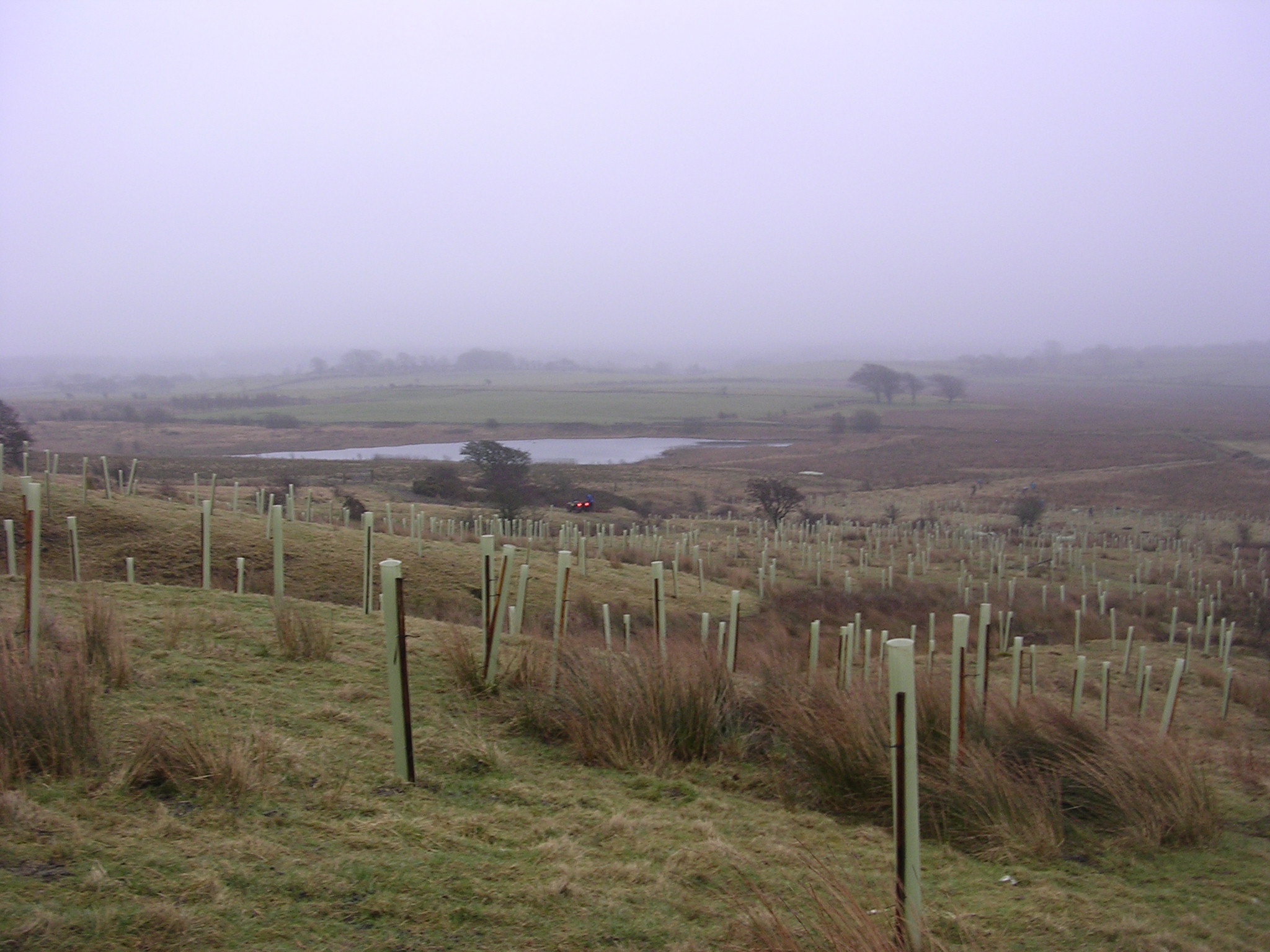Moorside Woods
Summary
About the site
Carbon Buyers - Why buy from this project?
Landowners - Why get involved in the WCC?
Who is involved?
How we go about it
Wider benefits
Summary
Unique ID: 103000000004407
Project Status: Verified - Year 5
Project Developer: James Hepburne Scott, Forest Carbon Ltd
Project Location: Kidburngill Farm, Lamplugh, Workington, Cumbria, CA14 4RL
Previous Land Use: Heavily Grazed Pastureland
Net Planted Area: 34.39 ha
Species Mix: 64% Oak, 26% Alder, 11% Ash.
Woodland Management: Minimum Intervention, management only for access and minor firewood removal
Estimated Sequestration Rate: 18,891 tonnes CO2e over 100 years
Start Date: Carbon Project commenced January 2010
About the site
Moorside Woods (also known as Kidburngill) have been created on inorganic soils in undulating farmland on a prominent hill slope close to the Lake District National Park in Cumbria. The land was previously heavily grazed pastureland. The new woods can easily be seen from the A5086 Cleator Moor to Cockermouth road and are fully accessible to the public. The landowner has tried to imitate and complement the surrounding landscape by planting a mixture of native broadleaves which are not in species blocks but positively mixed.

Kidburngill, February 2009. Photo: Forest Carbon Ltd
Carbon Buyers - Why buy from this project?
The Green Insurance Company have purchased the majority of carbon from this project, and got involved to satisfy their commitments to their customers to lock up CO2 equivalent to the annual emissions from the vehicles they were insuring. The company planted its one millionth tree in 2011 and expects to reach two million in 2013 – all driven by demand from their green-minded customers.
June Lynch, Managing Director of The Green Insurance Company says:
“As an environmentally-conscious business, The Green Insurance Company proudly supports carbon capture schemes and the regeneration of British countryside through new woodland. We are delighted that our Kidburngill site has achieved Woodland Carbon Code validation and would like to thank our customers, whose decision to insure their vehicles with us has made this possible. Our business launched in 2007 and in just five short years we’ve planted over two million trees. We’re excited about the future impact we can have upon woodland across the country and believe the validation at Kidburngill will be one of many.”
Landowners - Why get involved?
James Osborn, the landowner says: “Our native broadleaf woodland will provide links to adjacent woodlands and to the surrounding landscape – it sits on the edge of the Lake District National Park. It provides a much needed habitat for birds and the choice of tree species reflects this. Although deer are an important native mammal and they will undoubtedly use the woodland as cover as they move around the landscape. We have protected the trees with 1.2m shelters instead of using deer fencing and we will be keeping an eye on their development in the area so that they don’t harm the woodland as it establishes. With Moorside Woods being so near to the Lake District we should have plenty of opportunities to get people interested and involved over the coming years.”
Who was involved?
Steve Prior, Forest Carbon Director says: “We were extremely pleased at the launch of the Woodland Carbon Code, and proud to be the developers of Kidburngill, the first project in England to achieve validation under the Code. Since 2006 Forest Carbon has been creating woodlands all over the UK for environmentally conscious businesses. We look forward to continued work with The Green Insurance Company, and companies like them, in creating high quality new woodlands for the UK.”
How are we going about it?
The Management Plan doesn’t include any formal management beyond getting the trees growing and maintaining the access. After 5 and then every 10 years we are going to monitor the amount of carbon captured by the woodland using Method B of the Carbon Assessment Protocols. This will help us to get an accurate figure of the amount of good it is doing to help combat climate change. We've used the Forestry Commission's models to predict that the woodland will take 18,891 tCO2e out of the atmosphere over 100 years.
What are the wider benefits?
Wider Landscape
Moorside Woods complements the surrounding landscape by breaking up the pasture and offering wildlife shelter and new habitat through the planting of mixed native broadleaves.
Scores (out of 5) for the wider benefits provided by Moorside Woods. Scores calculated using the WCC Woodland Benefits Tool.
Biodiversity
There is no intention to manage the woodland beyond ensuring that it gets a good start in life and maintaining access. This woodland will act as a safe haven for wildlife.
Water
The new woodland should act as a buffer to the rivers and other water bodies that are nearby and reduce flood risks in the area too due to uptake of water by the woodland.
Community
Moorside Woods is fully accessible to the public and can be enjoyed by locals and those visiting the nearby Lake District National Park.
Economy
There is no intention to enable economic activity within the woodland, beyond income from carbon.


